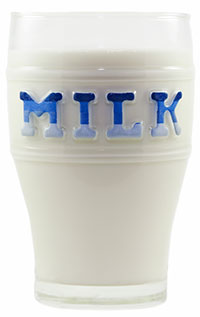 Vitamin D is essential for human health, but very few foods contain it naturally. How, then, do we make sure we consume enough on a daily basis? Thankfully, through fortification, this critical nutrient has become a part of everyday foods.
Vitamin D is essential for human health, but very few foods contain it naturally. How, then, do we make sure we consume enough on a daily basis? Thankfully, through fortification, this critical nutrient has become a part of everyday foods.Fluid milk is the main vehicle that carries vitamin D. In fact, recently released results from a University of Eastern Finland study showed that milk accounted for nearly 50 percent of vitamin D intake in participating children ages 6 to 8 years old.
Another 30 percent of daily vitamin D came from dietary fats and approximately 10 percent came from fish. The flesh of fatty fish, such as tuna, salmon and mackerel, and fish liver oils are foods that contain the most vitamin D naturally.
The study, which was published in the British Journal of Nutrition, found that children who drank at least three glasses of milk per day had a higher serum vitamin D level than their peers who drank less milk. Children who took vitamin D supplements and children who exercised more than 2 hours per day also had higher serum vitamin D levels.
Very few of the children evaluated had severely low levels of serum vitamin D, but 20 percent had serum levels under 50 nmol/L, which is considered a sufficient level of vitamin D in Finland. Even more concerning, more than 80 percent of children fell below the recommendations for vitamin D intake.
Since the 1930s, milk has been fortified in the U.S., making it a valuable source of vitamin D. Still, a similar trend was found among U.S. adults, where osteoporosis and low bone mass are of concern. This need to improve bone health solidified dairy's spot in the new Dietary Guidelines for Americans. To learn more, read the article "Dairy holds position in new dietary guide."
(c) Hoard's Dairyman Intel 2016
February 29, 2016








